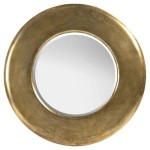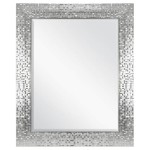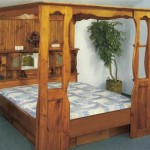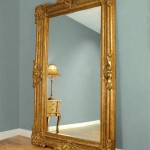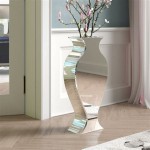Name the Type of Mirror Used in Car Headlights
Car headlights are an essential safety feature that illuminates the road ahead, enhancing visibility and ensuring safer driving conditions. Within the headlight assembly, a crucial component facilitates the direction and concentration of light – the reflector. The reflector, a precisely shaped mirror, plays a vital role in harnessing the light emitted from the bulb and projecting it onto the road surface.
While various types of mirrors exist, the type commonly employed in car headlights is the
parabolic reflector
. This type of reflector, with its distinctive curved shape, possesses unique optical properties that prove advantageous in headlight design.Parabolic Reflectors: Focusing Light with Precision
A parabolic reflector is characterized by its symmetrical, bowl-like shape, resembling a section of a parabola. The unique geometry of this reflector allows for the precise focusing and direction of light. When a light source is positioned at the focal point of the parabolic reflector, the emitted light rays are reflected by the mirror's curved surface and travel parallel to the optic axis. This parallel beam of light creates a concentrated and focused beam, effectively illuminating the road ahead.
The focal point, located within the parabolic reflector, is a critical element in determining the beam's direction and intensity. By strategically placing the light source at the focal point, engineers can fine-tune the headlight's beam pattern to achieve optimal illumination for various driving conditions. This precision in light direction ensures maximum visibility while minimizing glare for oncoming drivers.
Advantages of Parabolic Reflectors in Headlights
The use of parabolic reflectors in car headlights offers numerous advantages, making them the preferred choice for automotive lighting systems:
1.
Concentrated Beam:
Parabolic reflectors effectively focus light into a concentrated beam, maximizing illumination on the road surface. This ensures clear visibility even in low-light conditions and enhances driver safety.2.
Parallel Light:
The unique shape of the reflector directs light rays parallel to the optic axis, producing a uniform and consistent beam pattern. This results in efficient illumination without any unnecessary light scatter or glare.3.
Controlled Beam Pattern:
The placement of the light source within the focal point allows for precise control over the beam pattern. This enables the creation of specific beam patterns, such as high beams for long-distance visibility and low beams for closer illumination, further enhancing safety and visibility.Beyond Parabolic Reflectors: Enhancing Headlights with Technology
In addition to parabolic reflectors, modern car headlights often incorporate advanced technologies to further refine the beam pattern and enhance performance. These technologies include:
1.
Projector Headlights:
Projector headlights combine a parabolic reflector with a lens, offering enhanced control over the light beam. The lens further refines the beam pattern, reducing scatter and glare, while providing more precise light distribution on the road surface.2.
Adaptive Headlights:
Some vehicles feature adaptive headlights that can adjust the beam pattern based on driving conditions and vehicle speed. This technology utilizes sensors and actuators to dynamically adjust the headlight's direction and intensity, ensuring optimal illumination in various scenarios.3.
LED and HID Technology:
Advances in lighting technology have brought forth high-intensity discharge (HID) and light-emitting diode (LED) bulbs, offering improved brightness, longevity, and energy efficiency compared to traditional halogen bulbs. These technologies, combined with parabolic reflectors, contribute significantly to enhanced headlight performance and safety.
8 Name The Type Of Mirror Used In Following Situations A Headlights Car B Side Rear

8 Name The Type Of Mirror Used In Following Situations A Headlights Car B Side Rear

Q 4 Name The Type Of Mirror Used In Following Situations I Headlight

Which Mirror Is Used In The Headlights Of A Car

Solved Name The Type Of Mirror Used In Following Situations A Headlights Car B Side Rear View Vehicle C Solar Furnace Support Your Answer With Reason
Headlight Tech Explained Leds Laser Light Halogens Hids All You Need To Know Autocar

5 Types Of Headlights Explained

Name The Type Of Mirror Used In Following Situations A Headlights Car

Solved Answer The Questions Please As Directed 2 M Why Do We Prefer Convex Mirrors Rear View In Vehicles Find Focal Length Of A

Low Beam Vs High Explained What S The Difference And When To Use Lemon Bin Vehicle Guides


